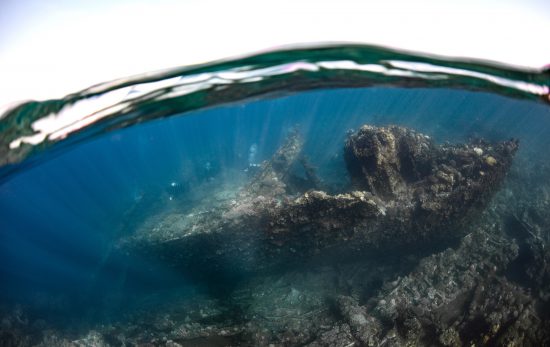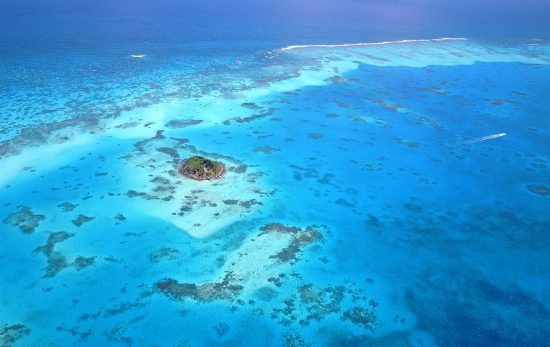In today’s post, things are going to get hairy. Braids, bangs, mustaches and how to deal with long hair, we’re going to cover it all. Read on to learn how to keep your hair healthy and how to prevent common hair-related problems when scuba diving.
Mustaches and Mask Leaks
Your mask requires a good seal to keep water from leaking in, and sometimes a stache can get in the way. If you only dive a few times a year, the easiest solution may be to shave off that lip toupee and let it grow back when your holiday is over.
https://www.instagram.com/p/Bu_qEKnDq4C/
Divers who don’t want to sacrifice their face lace can try the following alternatives:
- Shave the area just under your nose; if you’re worried it will look weird, start by gradually thinning the hair with tweezers.
- Purchase a high-quality, low profile mask with soft silicone, or try a full-face mask
- Apply silicone grease where the mask skirt touches your mustache.
Real talk: it can take a few tries to figure out how much silicone grease to use, and it works for some divers and not others. You can try different balms, or even beeswax-based mustache wax, just avoid petroleum-based products. Chemicals used in petroleum products can break down the silicone skirt and shorten the life of your mask.
Learn more about buying your first diving mask. Or, read additional tips for divers with a mustache.
Scuba Diving Hair Care Tips
We asked PADI Pros for their top tips to keep hair from looking damaged and dried out after diving in salt water.
Rinse your hair with fresh water before getting in the water
Saturating your hair with fresh water can prevent salt water from being absorbed into the cuticle.
Use biodegradable leave-in conditioner when diving
For extra protection, work a generous amount of biodegradable leave-in conditioner into your locks. The conditioner acts as a barrier to salt water absorption and makes hair easier to detangle post-dive.
https://www.instagram.com/p/BipCW6LjC4W/
Use a neoprene mask strap
Cover your existing mask strap with a neoprene sleeve, sometimes called a slap strap or strap wrapper. A bare mask strap can grab and stubbornly entangle hair. The cover prevents entanglement and allows you to comfortably position the mask strap right where you need it.
Slap straps can be a fun way to express yourself as a diver. Buy a mask strap from your local PADI® dive shop as a conversation piece when you travel, or choose one with an image of your favorite dive destination or sea creature on the back.
https://www.instagram.com/p/BnheRgoD3nQ/
Swap your snorkel keeper
The snorkel keeper that came with your mask is designed to make snorkel removal quick and easy, but probably wasn’t engineered by someone with long hair. The clips and notches attract and trap stray strands like crazy! By replacing your existing snorkel holster with an inexpensive figure 8-shaped snorkel keeper, you’ll secure your snorkel without tearing out your hair.
Après dive hair care
After each dive, rinse your hair with freshwater. Then, use a wide-toothed comb or a detangling brush to remove snarls. A regular brush can damage hair, which is more fragile when wet. Start at the bottom and gently work your way up. If you dive every week, periodic deep-conditioning can help restore luster and counteract damage from chlorine, saltwater and sun exposure.
The 4 Best Hairstyles for Scuba Diving
Long hair and diving do not go well together. Until we learn how to turn into mermaids, here are the best options for keeping hair out of your face and away from your dive gear:
#4 A low ponytail off to one side – a side ponytail can help prevent long hair from getting tangled around first stage. If you have very long hair, use multiple elastics down the length of the pony tail to keep hair from snarling. Ponytails are not our number one choice because they can easily loosen during the dive, but sometimes they’re the only option for divers with short-to-medium-length hair.
#3 A bun – arrange your hair at the very top of your head, or at the nape of your neck (because your mask strap has to go in the middle). Corral bangs with barrettes, a headband, a buff, or a combination of all three.
#2 A french braid – weaving hair into a braid is one of the best ways to secure hair and prevent snarls. A braided ponytail works well, but a french braid is even better. In either case, leave hair braided until after the dive. Rinse hair with fresh water before undoing the braid, and gently detangle.
#1 Braided pigtails – two braids are definitely better than one. Separating hair into two sections is the least snarlsome option for divers with long hair. Two braids are also the most adorable option.
For serious tangle-prevention, wear a beanie or hood
The best way to keep your hair from getting snarled when scuba diving is to invest in a beanie cap or hood. Headbands, head scarves, and buffs usually aren’t enough to keep flyaways from escaping underwater, especially if you have bangs. A scuba beanie (or hood) secures your mane and prevents stray strands from getting in your face or wrapped around your equipment.
https://www.instagram.com/p/Bo-EBqGF1V0/


